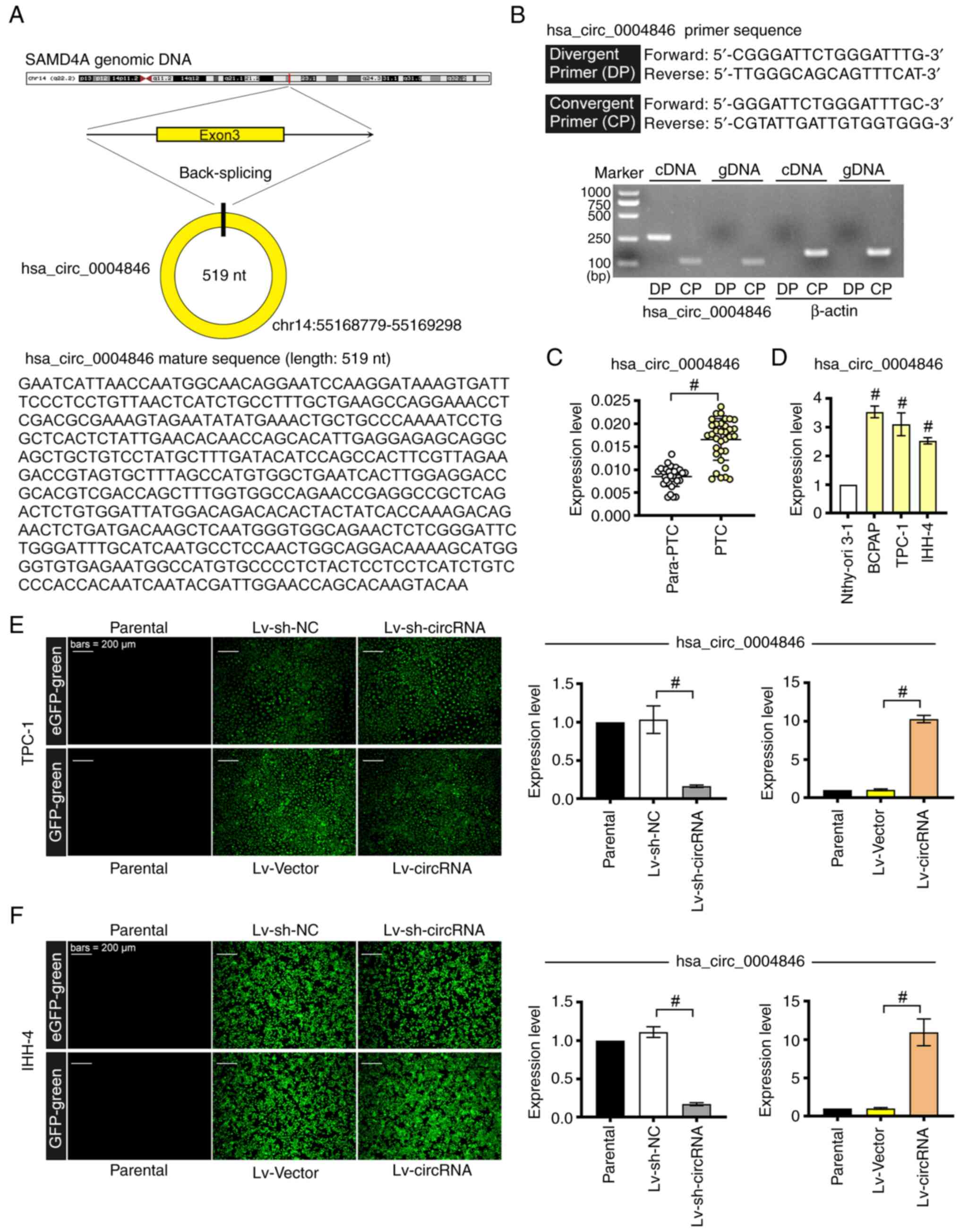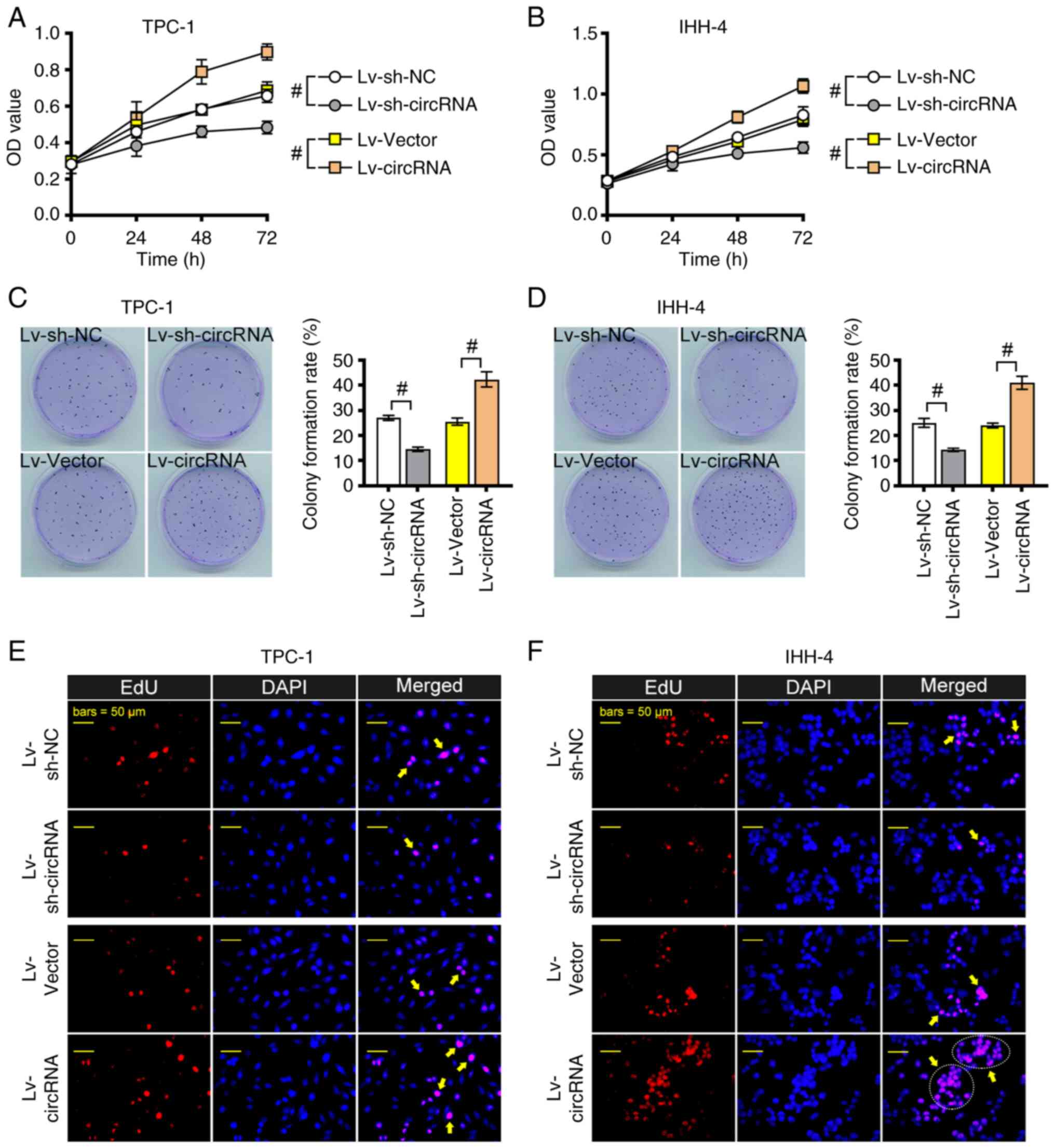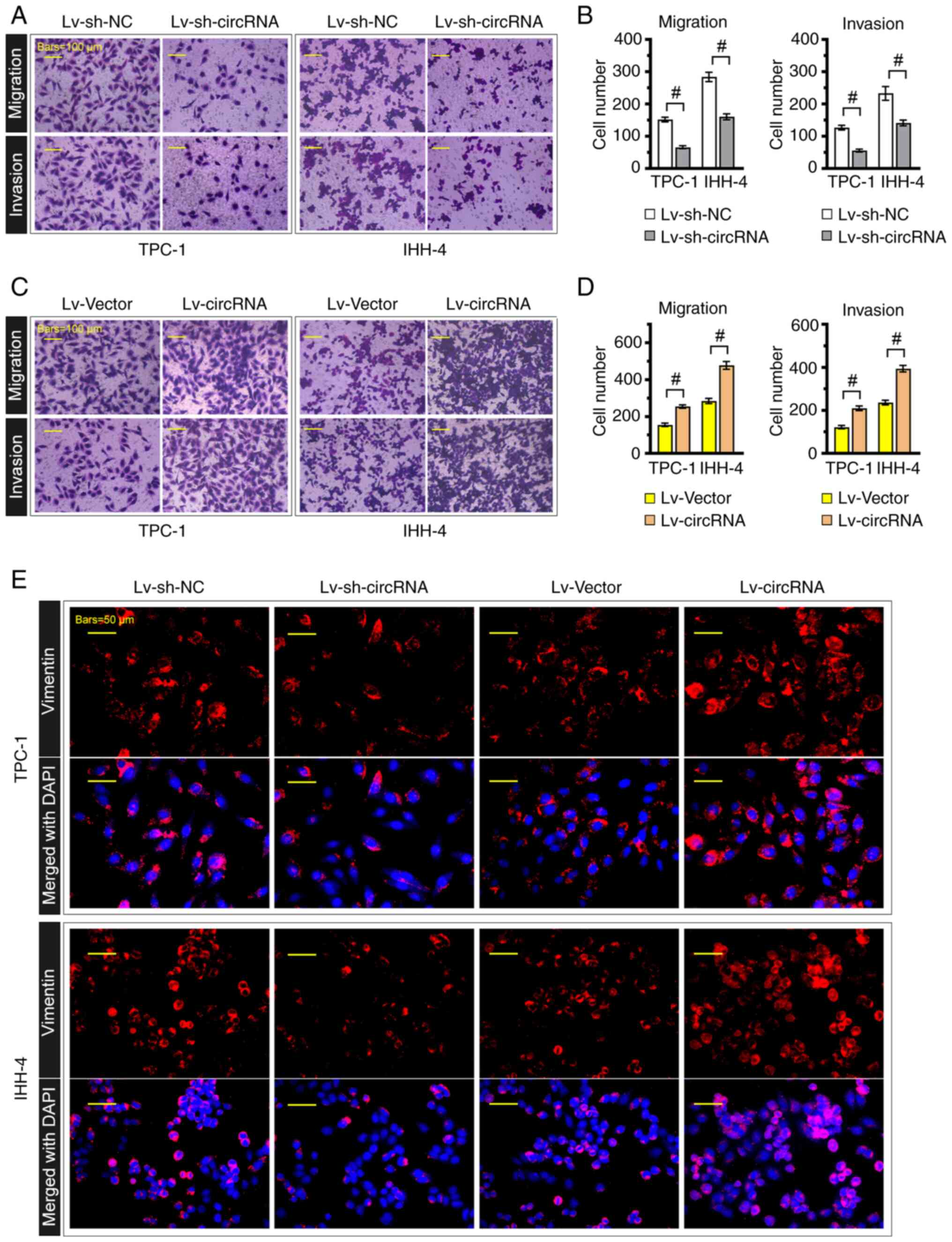|
1
|
Gambardella C, Offi C, Clarizia G, Romano
RM, Cozzolino I, Montella M, Di Crescenzo RM, Mascolo M, Cangiano
A, Di Martino S, et al: Medullary thyroid carcinoma with double
negative calcitonin and CEA: A case report and update of literature
review. BMC Endocr Disord. 19:1032019. View Article : Google Scholar : PubMed/NCBI
|
|
2
|
Jiang C, Cheng T, Zheng X, Hong S, Liu S,
Liu J, Wang J and Wang S: Clinical behaviors of rare variants of
papillary thyroid carcinoma are associated with survival: A
population-level analysis. Cancer Manag Res. 10:465–472. 2018.
View Article : Google Scholar : PubMed/NCBI
|
|
3
|
Fröhlich E and Wahl R: The current role of
targeted therapies to induce radioiodine uptake in thyroid cancer.
Cancer Treat Rev. 40:665–674. 2014. View Article : Google Scholar : PubMed/NCBI
|
|
4
|
Ryu YJ, Lim SY, Na YM, Park MH, Kwon SY
and Lee JS: Prostate-specific membrane antigen expression predicts
recurrence of papillary thyroid carcinoma after total
thyroidectomy. BMC Cancer. 22:12782022. View Article : Google Scholar : PubMed/NCBI
|
|
5
|
Ashwal-Fluss R, Meyer M, Pamudurti NR,
Ivanov A, Bartok O, Hanan M, Evantal N, Memczak S, Rajewsky N and
Kadener S: circRNA biogenesis competes with pre-mRNA splicing. Mol
Cell. 56:55–66. 2014. View Article : Google Scholar : PubMed/NCBI
|
|
6
|
Lei M, Zheng G, Ning Q, Zheng J and Dong
D: Translation and functional roles of circular RNAs in human
cancer. Mol Cancer. 19:302020. View Article : Google Scholar : PubMed/NCBI
|
|
7
|
Zhang Q, Wang W, Zhou Q, Chen C, Yuan W,
Liu J, Li X and Sun Z: Roles of circRNAs in the tumour
microenvironment. Mol Cancer. 19:142020. View Article : Google Scholar : PubMed/NCBI
|
|
8
|
Zhang D, Tao L, Xu N, Lu X, Wang J, He G,
Tang Q, Huang K, Shen S and Chu J: CircRNA circTIAM1 promotes
papillary thyroid cancer progression through the miR-646/HNRNPA1
signaling pathway. Cell Death Discov. 8:212022. View Article : Google Scholar : PubMed/NCBI
|
|
9
|
Bi W, Huang J, Nie C, Liu B, He G, Han J,
Pang R, Ding Z, Xu J and Zhang J: CircRNA circRNA_102171 promotes
papillary thyroid cancer progression through modulating
CTNNBIP1-dependent activation of β-catenin pathway. J Exp Clin
Cancer Res. 37:2752018. View Article : Google Scholar : PubMed/NCBI
|
|
10
|
Wei W, Ji L, Duan W and Zhu J: CircSAMD4A
contributes to cell doxorubicin resistance in osteosarcoma by
regulating the miR-218-5p/KLF8 axis. Open Life Sci. 15:848–859.
2020. View Article : Google Scholar : PubMed/NCBI
|
|
11
|
Zhao Y and Zhang J: CircSAMD4A accelerates
cell proliferation of osteosarcoma by sponging miR-1244 and
regulating MDM2 mRNA expression. Biochem Biophys Res Commun.
516:102–111. 2019. View Article : Google Scholar : PubMed/NCBI
|
|
12
|
Xie C, Chen B, Wu B, Guo J, Shi Y and Cao
Y: CircSAMD4A regulates cell progression and epithelial-mesenchymal
transition by sponging miR-342-3p via the regulation of FZD7
expression in osteosarcoma. Int J Mol Med. 46:107–118.
2020.PubMed/NCBI
|
|
13
|
Zhong Y, Du Y, Yang X, Mo Y, Fan C, Xiong
F, Ren D, Ye X, Li C, Wang Y, et al: Circular RNAs function as
ceRNAs to regulate and control human cancer progression. Mol
Cancer. 17:792018. View Article : Google Scholar : PubMed/NCBI
|
|
14
|
Lee YS and Dutta A: MicroRNAs in cancer.
Annu Rev Pathol. 4:199–227. 2009. View Article : Google Scholar : PubMed/NCBI
|
|
15
|
White WL: Erratum to: Why I hate the index
finger. Hand (N Y). 6:2332011. View Article : Google Scholar : PubMed/NCBI
|
|
16
|
Chen Y, Dong B, Huang L and Huang H: Serum
microRNAs as biomarkers for the diagnosis of papillary thyroid
carcinoma: A meta-analysis. Bosn J Basic Med Sci. 22:862–871. 2022.
View Article : Google Scholar : PubMed/NCBI
|
|
17
|
Jiang Y, Liu Y, Zhang Y, Ouyang J, Feng Y,
Li S, Wang J, Zhang C, Tan L, Zhong J and Zou L: MicroRNA-142-3P
suppresses the progression of papillary thyroid carcinoma by
targeting FN1 and inactivating FAK/ERK/PI3K signaling. Cell Signal.
109:1107922023. View Article : Google Scholar : PubMed/NCBI
|
|
18
|
Almeida JL and Korch CT: Authentication of
human and mouse cell lines by short tandem repeat (STR. DNA
genotype analysis. In Assay Guidance Manual. Markossian S, Grossman
A, Arkin M, Auld D, Austin C, Baell J, Brimacombe K, Chung TDY,
Coussens NP, Dahlin JL, et al: Eli Lilly & Company and the
National Center for Advancing Translational Sciences; 2004
|
|
19
|
Livak KJ and Schmittgen TD: Analysis of
relative gene expression data using real-time quantitative PCR and
the 2(−Delta Delta C(T). method. Methods. 25:402–408. 2001.
View Article : Google Scholar : PubMed/NCBI
|
|
20
|
Zhao X, Fu J, Hu B, Chen L, Wang J, Fang
J, Ge C, Lin H, Pan K, Fu L, et al: Serine metabolism regulates YAP
activity through USP7 in colon cancer. Front Cell Dev Biol.
9:6391112021. View Article : Google Scholar : PubMed/NCBI
|
|
21
|
Petrulea MS, Plantinga TS, Smit JW,
Georgescu CE and Netea-Maier RT: PI3K/Akt/mTOR: A promising
therapeutic target for non-medullary thyroid carcinoma. Cancer
Treat Rev. 41:707–713. 2015. View Article : Google Scholar : PubMed/NCBI
|
|
22
|
Conzo G, Mauriello C, Docimo G,
Gambardella C, Thomas G, Cavallo F, Tartaglia E, Napolitano S,
Varriale R, Rossetti G, et al: Clinicopathological pattern of lymph
node recurrence of papillary thyroid cancer. Implications for
surgery. Int J Surg. 12 (Suppl 1):S194–S197. 2014. View Article : Google Scholar : PubMed/NCBI
|
|
23
|
Cooper DS, Doherty GM, Haugen BR, Kloos
RT, Lee SL, Mandel SJ, Mazzaferri EL, McIver B, Pacini F,
Schlumberger M, et al: Revised American Thyroid Association
management guidelines for patients with thyroid nodules and
differentiated thyroid cancer. Thyroid. 19:1167–1214. 2009.
View Article : Google Scholar : PubMed/NCBI
|
|
24
|
Conzo G, Docimo G, Mauriello C,
Gambardella C, Esposito D, Cavallo F, Tartaglia E, Napolitano S and
Santini L: The current status of lymph node dissection in the
treatment of papillary thyroid cancer. A literature review. Clin
Ter. 164:e343–e346. 2013.PubMed/NCBI
|
|
25
|
Wang L, Wang P, Su X and Zhao B:
Circ_0001658 promotes the proliferation and metastasis of
osteosarcoma cells via regulating miR-382-5p/YB-1 axis. Cell
Biochem Funct. 38:77–86. 2020. View Article : Google Scholar : PubMed/NCBI
|
|
26
|
Ding B, Fan W and Lou W: hsa_circ_0001955
Enhances in vitro proliferation, migration, and invasion of HCC
cells through miR-145-5p/NRAS axis. Mol Ther Nucleic Acids.
22:445–455. 2020. View Article : Google Scholar : PubMed/NCBI
|
|
27
|
Huang G, Mao L and Hu X: Circ_0011373
promotes papillary thyroid carcinoma progression by regulating
miR-1271/LRP6 axis. Hormones (Athens). 22:375–387. 2023. View Article : Google Scholar : PubMed/NCBI
|
|
28
|
Jiang YM, Liu W, Jiang L and Chang H:
CircLDLR promotes papillary thyroid carcinoma tumorigenicity by
regulating miR-637/LMO4 axis. Dis Markers.
2021.39771892021.PubMed/NCBI
|
|
29
|
Chong ST, Tan KM, Kok CYL, Guan SP, Lai
SH, Lim C, Hu J, Sturgis C, Eng C, Lam PYP and Ngeow J: IL13RA2 is
differentially regulated in papillary thyroid carcinoma vs
follicular thyroid carcinoma. J Clin Endocrinol Metab.
104:5573–5584. 2019. View Article : Google Scholar : PubMed/NCBI
|
|
30
|
Jere SW, Houreld NN and Abrahamse H: Role
of the PI3K/AKT mTOR and GSK3β. signalling pathway and
photobiomodulation in diabetic wound healing. Cytokine Growth
Factor Rev. 50:52–59. 2019. View Article : Google Scholar : PubMed/NCBI
|
|
31
|
Han J, Zhang M, Nie C, Jia J, Wang F, Yu
J, Bi W, Liu B, Sheng R, He G, et al: miR-215 suppresses papillary
thyroid cancer proliferation, migration, and invasion through the
AKT/GSK-3β/Snail signaling by targeting ARFGEF1. Cell Death Dis.
10:1952019. View Article : Google Scholar : PubMed/NCBI
|
|
32
|
Colamaio M, Puca F, Ragozzino E, Gemei M,
Decaussin-Petrucci M, Aiello C, Bastos AU, Federico A, Chiappetta
G, Del Vecchio L, et al: miR-142-3p down-regulation contributes to
thyroid follicular tumorigenesis by targeting ASH1L and MLL1. J
Clin Endocrinol Metab. 100:E59–E69. 2015. View Article : Google Scholar : PubMed/NCBI
|
|
33
|
Bartel DP: MicroRNAs: Target recognition
and regulatory functions. Cell. 136:215–233. 2009. View Article : Google Scholar : PubMed/NCBI
|
|
34
|
Liu SS, Qi J, Teng ZD, Tian FT, Lv XX, Li
K, Song YJ, Xie WD, Hu ZW and Li X: Resistomycin attenuates
triple-negative breast cancer progression by inhibiting E3 ligase
Pellino-1 and inducing SNAIL/SLUG degradation. Signal Transduct
Target Ther. 5:1332020. View Article : Google Scholar : PubMed/NCBI
|
|
35
|
Jeon YK, Kim CK, Hwang KR, Park HY, Koh J,
Chung DH, Lee CW and Ha GH: Pellino-1 promotes lung carcinogenesis
via the stabilization of Slug and Snail through K63-mediated
polyubiquitination. Cell Death Differ. 24:469–480. 2017. View Article : Google Scholar : PubMed/NCBI
|
|
36
|
Park HY, Go H, Song HR, Kim S, Ha GH, Jeon
YK, Kim JE, Lee H, Cho H, Kang HC, et al: Pellino 1 promotes
lymphomagenesis by deregulating BCL6 polyubiquitination. J Clin
Invest. 124:4976–4988. 2014. View Article : Google Scholar : PubMed/NCBI
|
|
37
|
Fei X, Zhu C, Liu P, Liu S, Ren L, Lu R,
Hou J, Gao Y, Wang X and Pan Y: PELI1: Key players in the oncogenic
characteristics of pancreatic Cancer. J Exp Clin Cancer Res.
43:912024. View Article : Google Scholar : PubMed/NCBI
|
|
38
|
Zhou W, Hu Y, Wang B, Yuan L, Ma J and
Meng X: Aberrant expression of PELI1 caused by Jagged1 accelerates
the malignant phenotype of pancreatic cancer. Cell Signal.
111:1108772023. View Article : Google Scholar : PubMed/NCBI
|
|
39
|
Ko CJ, Zhang L, Jie Z, Zhu L, Zhou X, Xie
X, Gao T, Yang JY, Cheng X and Sun SC: The E3 ubiquitin ligase
Peli1 regulates the metabolic actions of mTORC1 to suppress
antitumor T cell responses. EMBO J. 40:e1045322021. View Article : Google Scholar : PubMed/NCBI
|
|
40
|
Zheng T, Zhou Y, Xu X, Qi X, Liu J, Pu Y,
Zhang S, Gao X, Luo X, Li M, et al: MiR-30c-5p loss-induced PELI1
accumulation regulates cell proliferation and migration via
activating PI3K/AKT pathway in papillary thyroid carcinoma. J
Transl Med. 20:202022. View Article : Google Scholar : PubMed/NCBI
|
















